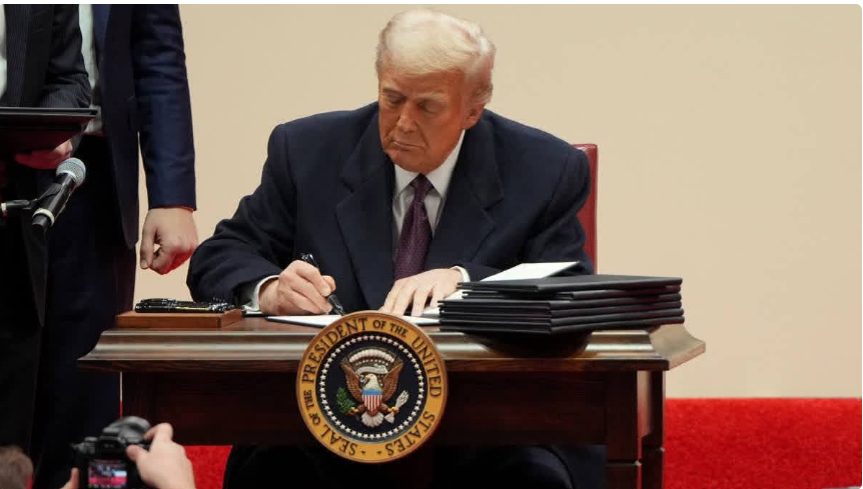Iron Dome a bold and unprecedented pledge during his 2024 presidential campaign, former U.S. President Donald Trump announced his intention to develop and deploy a missile defense system for the United States modeled after Israel’s Iron Dome. The proposal to build a domestic missile shield has sparked widespread debate among defense experts, political analysts, and the American public, with Trump arguing that such a system would bolster national security and protect U.S. citizens from potential missile threats.
First introduced as part of his campaign platform, the proposed U.S. version of the Iron Dome is a key element of Trump’s broader strategy to reclaim the presidency by emphasizing national defense, security, and technological dominance. While the idea has resonated with some of his supporters, critics argue that logistical, financial, and technical obstacles may hinder its feasibility.
What is the Iron Dome System?
Israel’s Iron Dome missile defense system is widely considered one of the most advanced and successful defense systems in the world. Designed to intercept and destroy short-range rockets and artillery shells, the Iron Dome has been instrumental in protecting Israeli civilians from missile attacks by militant groups like Hamas and Hezbollah.
Since its deployment in 2011, the Iron Dome system has achieved an interception rate of approximately 90%, saving countless lives and preventing major damage in Israel’s urban areas. The technology works by using advanced radar and detection systems to identify incoming projectiles and launch interceptor missiles to neutralize them before they hit their targets.
While the Iron Dome was developed by Israel’s Rafael Advanced Defense Systems and Israel Aerospace Industries, it was partially funded and supported by the United States, which contributed millions of dollars to its development. Trump has referred to this collaboration as an example of the strength of U.S.-Israeli defense ties and said that America should replicate this type of system for its own protection.  For the more information click on this link
For the more information click on this link
Trump’s Vision for an ‘Iron Dome’ in the U.S.
During rallies, speeches, and interviews on the 2024 campaign trail, Trump repeatedly emphasized the need to develop a missile defense system capable of protecting American cities from external threats, such as ballistic and cruise missile attacks. Trump’s rhetoric has positioned the proposed Iron Dome system as the centerpiece of his vision for a robust and impregnable U.S. defense apparatus.
“When I was President, I worked closely with Israel to ensure they could protect their people with the incredible Iron Dome missile shield,” Trump said at a campaign event in Texas. “Now, as dangerous weapons become more sophisticated, we must do the same for America. I will build a missile defense system that can protect every inch of the United States. No city will ever be vulnerable to missile attacks—not under my watch.”
Trump likened his proposal to historical U.S. projects such as the creation of NASA during the Cold War, emphasizing that the next frontier of American security lies in building cutting-edge missile defense technologies. He pointed to the growing missile arsenals of adversaries like Russia, China, North Korea, and Iran, warning that the U.S. must act decisively to ensure its national security.
Under Trump’s vision, the U.S. Iron Dome system would not only intercept conventional missiles but could also counter emerging threats, such as hypersonic weapons and drone swarms. Trump stated that the project would require significant investment and collaboration with private defense contractors, military engineers, and international partners, potentially creating thousands of jobs for Americans.
Feasibility and Challenges of Building a U.S. Iron Dome
While Trump’s pledge to build a domestic missile defense system has drawn praise from supporters who view it as a necessary measure to strengthen U.S. security, many experts have raised questions about its practicality. Building an Iron Dome-style system in the United States presents several challenges, ranging from technical and logistical constraints to budgetary considerations.
1. Geographic Scale
One of the biggest differences between Israel and the United States is geographical size. Israel is a small country, making it feasible to deploy the Iron Dome to cover large portions of its territory. In contrast, the U.S. is significantly larger, with major urban centers and infrastructure spread across vast distances. Deploying an Iron Dome that can provide nationwide coverage would require far more interceptor batteries, radars, and command-and-control systems than Israel’s system.
This expansion in scale would not only drive up costs but also complicate the deployment and integration of such a system across the continental U.S. Defense analysts have pointed out that regionalized systems, such as those placed around major metropolitan areas, might be more feasible but would still leave some parts of the country vulnerable.
2. Advanced Missile Threats
While the Iron Dome has proven highly effective against short-range rockets and artillery shells, it is not designed to counter long-range missiles, intercontinental ballistic missiles (ICBMs), or hypersonic weapons, which are much faster and harder to intercept. Adversaries such as China, Russia, and North Korea have heavily invested in these advanced missile technologies, raising questions about whether an Iron Dome-like system would adequately address these emerging threats.
To counter such threats, experts argue that the U.S. would need to integrate technologies beyond the Iron Dome’s current capabilities, such as laser-based interceptors, advanced radar systems, and space-based sensors. This could significantly increase both the cost and complexity of the project.
3. Cost and Funding
Building a nationwide missile defense system would require a massive financial commitment, with estimates ranging from tens to hundreds of billions of dollars. Trump has argued that the costs would be justified by the system’s ability to save lives and deter future attacks, but critics have warned that such spending could strain the federal budget and divert resources from other priorities, such as infrastructure, healthcare, or education.
During his campaign, Trump proposed funding the project through reallocations of defense spending, partnerships with private defense contractors, and potential investments from allied nations. However, skeptics question whether these measures would be sufficient to cover the high costs of research, development, and deployment.
Support and Criticism
Support from Trump’s Base
Trump’s proposal to build an Iron Dome missile defense system has resonated strongly with his supporters, who view it as a bold and necessary move to strengthen U.S. security in an increasingly dangerous world. Supporters argue that the United States, as a global superpower, must prioritize the protection of its citizens and infrastructure from external threats.
“This is what America needs—a leader who isn’t afraid to put our safety first,” said Sarah Collier, a Trump supporter who attended a campaign rally in Florida. “With so much instability in the world, having a missile shield would give us peace of mind.”
Trump’s emphasis on job creation as a result of the project has also earned praise from his base. His campaign claims that the development and deployment of the U.S. Iron Dome system could generate tens of thousands of jobs in the defense and technology sectors, providing a much-needed boost to the economy.
Criticism from Experts and Opponents
On the other hand, many experts and political opponents have voiced skepticism about Trump’s proposal, calling it overly ambitious and potentially misguided. Critics argue that a missile defense system modeled after the Iron Dome may not address the full range of threats facing the U.S., particularly as adversaries develop more sophisticated and unconventional weapons.
“Missile defense is a complex issue, and an Iron Dome-style system might not be the answer for a country like the United States,” said Richard Carlisle, a former Pentagon advisor. “The U.S. already has layered missile defense systems in place, such as THAAD (Terminal High Altitude Area Defense) and Aegis, which are designed to counter specific threats. Rather than duplicating efforts, we need to focus on modernizing and integrating these systems.”
Opponents also argue that Trump’s plan could escalate tensions with adversaries, particularly if the U.S. develops new technologies capable of neutralizing strategic weapons such as ICBMs. Russia and China have previously expressed opposition to U.S. missile defense initiatives, claiming that they undermine global stability by threatening the balance of power.  For the more information click on this link
For the more information click on this link
Comparisons to Reagan’s ‘Star Wars’ Initiative
Trump’s Iron Dome proposal has drawn comparisons to the Strategic Defense Initiative (SDI), also known as “Star Wars,” a missile defense program launched by President Ronald Reagan in the 1980s. SDI envisioned a space-based system capable of intercepting and destroying incoming ballistic missiles, but the program faced significant technical and financial challenges and was eventually scaled back.
Like SDI, Trump’s proposal seeks to leverage cutting-edge technology to enhance national security. However, experts caution that the lessons of SDI—particularly its cost overruns, technological limitations, and strategic implications—must be taken into account when evaluating the feasibility of building a U.S. Iron Dome system.
The Road Ahead
As Donald Trump continues to campaign on the promise of building an Iron Dome missile defense system, the proposal is likely to remain a key topic of discussion leading up to the 2024 presidential election. If Trump were to win, he would face significant challenges in turning his vision into reality, from securing funding and overcoming technical hurdles to addressing domestic and international opposition.
Regardless of the outcome, Trump’s pledge to build a missile shield underscores the evolving nature of security threats in the 21st century and the growing emphasis on defense innovation. Whether the U.S. Iron Dome remains a campaign promise or becomes a cornerstone of American defense policy, it highlights the critical need for continued investment in technologies capable of protecting against the threats of tomorrow. ALSO READ:-Clashes Kill 17 in DR Congo’s Goma as Pro-Rwandan Forces Enter City 2025





